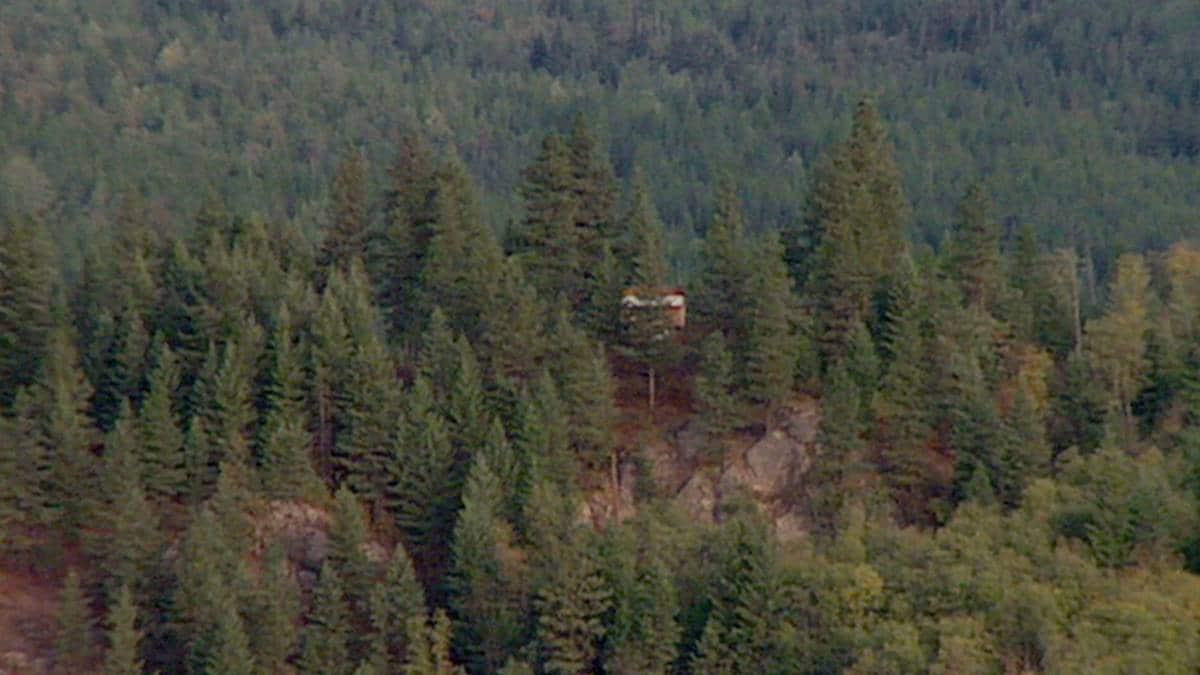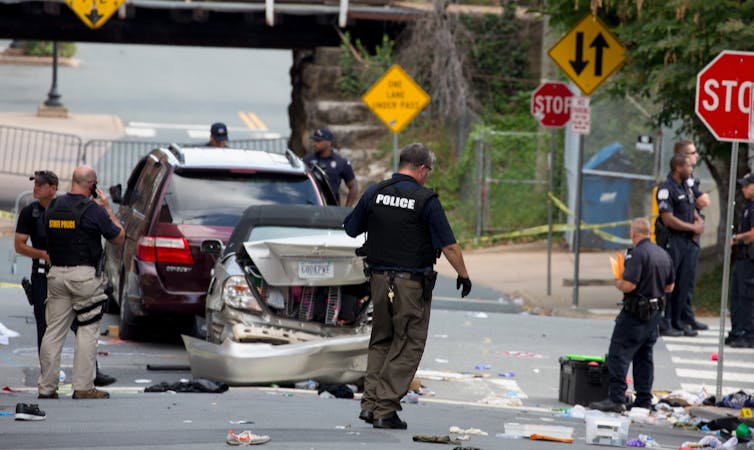Ruby Ridge – 25 Years Since the Siege That Fired up the Radical Right
by Crawford Gribben Professor of history, Queen's University Belfast 02/23/2018
A surveillance photograph of Vicki Weaver at Ruby Ridge, 1992. U.S. Marshal Service/Wikimedia Common
(PBS) Shortly before dawn on August 21, 1992, six heavily armed U.S. marshals made their way up to the isolated mountaintop home of Randy and Vicki Weaver and their children on Ruby Ridge in Northern Idaho. Charged with selling two illegal sawed-off shotguns to an undercover agent, Weaver had failed to appear in court and law enforcement was tasked with bringing him in. For months, the Weavers had been holed up on their property with a cache of firearms, including automatic weapons. When the federal agents surveilling the property crossed paths with members of the family, a firefight broke out. The standoff that mesmerized the nation would leave Weaver injured, his wife and son dead, and some convinced that the federal government was out of control. Drawing upon eyewitness accounts, including interviews with Weaver’s daughter, Sara, and federal agents involved in the confrontation, Ruby Ridge is a riveting account of the event that helped give rise to the modern American militia movement.

Believing himself to be the victim of entrapment, though the man at the centre of the siege, Randy Weaver’s anti-government paranoia was confirmed by his discovery of listening devices that had been planted around his cabin. On August 21, marshals disturbed the family dogs, triggering a short firefight that killed both Deputy US Marshal Bill Degan and Sammy Weaver, who had been shot in the back. The next day, Vicki Weaver was killed by a sniper while standing in the doorway of her cabin home.
On August 30 1992, negotiators brought an end to the violent siege of an isolated homestead in mountainous northern Idaho. The standoff at Ruby Ridge claimed the lives of a federal agent, a 14-year-old boy, and a mother with a baby in her arms, Randy Weaver, never fired a shot in retaliation.
Weaver had taken his family into seclusion near the Canadian border as part of his ideological transition from fundamentalist Protestantism to an idiosyncratic blend of visionary religion, conspiracy theory and racial separatism. Before the siege began, an undercover informant had tried and failed to coerce Weaver into spying on a community of neo-Nazis in nearby Hayden Lake, but succeeded in setting him up for a firearms offence. Weaver did not appear for his court hearing – it later transpired that a letter requiring this appearance had given the wrong date – and became the subject of year-long surveillance by US Marshals.
The siege of the Weaver cabin grew to involve hundreds of federal agents, and lasted 12 days, until civilian negotiators were able to strike a deal. The court case that followed cleared Randy Weaver of all charges other than missing his court date and violating bail, for which he was fined US$10,000 and given a short custodial sentence.
The investigation that followed the court case determined that the situation at Ruby Ridge had escalated thanks to the carelessness and overreach of federal agencies, awarded the family a US$3.1m settlement, and confirmed that Weaver’s paranoia had not been misplaced. But the lessons were not quickly learned.
Up in flames
In March and April 1993, the same sniper who shot Vicki Weaver in the Ruby Ridge incident was sent to Waco, Texas, to take part in another siege. This time, the government confronted a large and well-established religious community known as the Branch Davidians, an offshoot of the Seventh-day Adventists, who were suspected of hoarding illegal firearmsin their compound. After a protracted standoff, federal forces attempted to flush out the community’s members with tear gas, but the complex was engulfed by a fire that killed 76 people.
Apart from their hostility to the federal government and its agencies, the Weaver family and the Waco community had little in common. Randy Weaver was a separatist who had some informal association with the Aryan Nations movement; the Branch Davidians were a mixed-race religious community whose only association with extreme politics was an intense suspicion of government power and faith in guns.
Nevertheless, the deaths at Ruby Ridge and Waco provided the emerging radical right with a pantheon of martyrs that a then-nascent modern militia movement could claim as its own.
The seemingly out-of-control actions of government agencies at Ruby Ridge and Waco pulled competing elements of the radical, conservative and libertarian right into an informal coalition, one that contributed to the conspiratorial popular cultures of today.
This tendency’s most extreme and lethal expression came on April 13 1995, the second anniversary of the Waco fire, when Timothy McVeigh planted a bomb next to a federal building in Oklahoma City. The ensuing explosion killed 168 individuals, making it the worst incident of domestic terrorism in American history.
On the march again
As a recent PBS documentary suggests, the events of Ruby Ridge, Waco and Oklahoma City are as politically potent as ever, and not just as turning points in the rise of the radical right.
Despite the events in Charlottesville, when it comes to the fight over whose politics can be acceptably commemorated in public, the left is winning. In the name of eradicating slaveholders and Confederate leaders from commemorative public life, universities have changed the lyrics of university hymns and the names of prominent campus buildings. Confederate battle flags have been removed from public display across the South, including by state governments. Campaigners are now turning their attention to other examples of the exhibition of Confederate iconography, including the Charlottesville statues whose fate sparked the recent fracas.

This campaign is gathering pace. After Charlottesville, anti-racist protesters gathered in Durham, North Carolina, to topple a statue of General Robert E. Lee; city authorities in Baltimore and Annapolisremoved Confederate memorials by night in a bid to forestall further public action, and authorities elsewhere are reportedly planning to follow suit.
But insofar as these efforts are meant to erase the memory of the Confederate past, they are almost certainly futile. It is almost impossible to police cultures of commemoration: the American right, newly reconfigured, radicalised and increasingly agitated, is searching for historical roots and historical identity, and it will find them somewhere. After all, history will always offer some sort of vindication for anyone who seeks it out.



No Comments so far
Jump into a conversationNo Comments Yet!
You can be the one to start a conversation.Only registered users can comment.